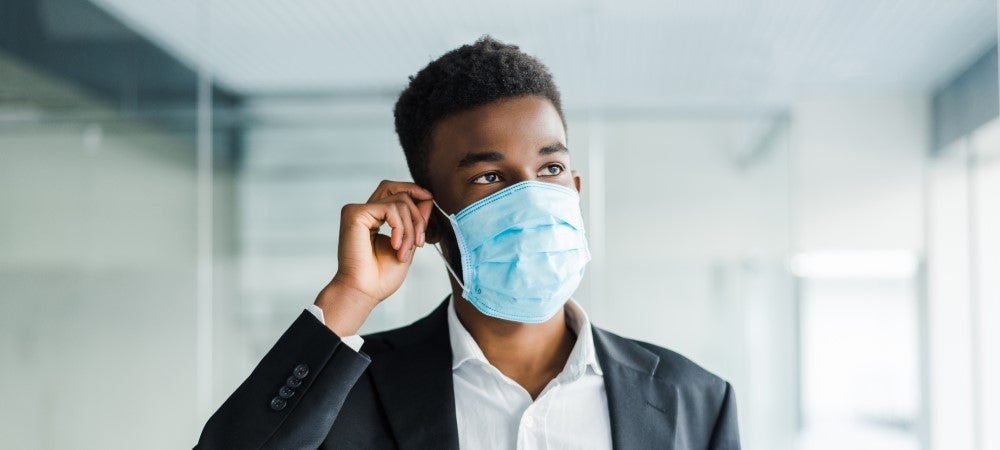It’s been a year since the very first cases of COVID-19 were detected here in the United States. We’ve experienced a lot in that time, with the virus impacting nearly every aspect of our lives. We’ve learned a lot, too. Thanks to an incredible, cooperative, international effort, there have been dramatic advances in infectious disease treatment and there are already two vaccines with Emergency Use Authorization from the U.S. Food and Drug Administration (FDA) to address COVID-19.
With all that’s behind us and all that’s still happening, we thought it was an important time to revisit what we know now about this worldwide pandemic and what’s being done currently to bring it to an end.
Rising Numbers
According to the World Health Organization, as of January 20, 2021 there had been more the 23 million coronavirus cases in the United States and more than 95 million worldwide. Cases have continued to increase, and new, more contagious strains of the virus have developed. That’s why the new vaccines are so important and why getting them into people’s arms is so urgent.
Effective Vaccines
The FDA has reported that both currently available vaccines (Pfizer and Moderna) are approximately 95% effective. And according to the National Center for Immunization and Respiratory Diseases (NCIRD), Division of Viral Diseases, vaccination is the best way to protect you from getting COVID-19.
With both vaccines, two separate doses are needed. Depending on the specific vaccine you get, the second shot will come 3-4 weeks after your first shot. The second shot is crucial to getting the most protection the vaccine has to offer.
There is currently a limited supply of COVID-19 vaccine in the United States, although the supply is increasing each week. The goal is for everyone to be able to be vaccinated as soon as the supply is large enough. And because the vaccines are federally funded, there should be no cost to get vaccinated.
Aggressive Vaccination Plans
As of January 18, nearly 30 million doses of the vaccine had already been distributed, according to the U.S. Centers for Disease Control and Prevention (CDC), and more than 10 million Americans had received their first dose.
The Ohio Department of Health, in cooperation with local health departments and providers, is determining how vaccines are distributed here in our state. The department’s plan is to distribute the vaccines to Ohioans at the greatest risk. For the most up-to-date information on the phased approach, click here.
Continuing Precautions
While you’re patiently waiting, and even after receiving the vaccine, it’s vitally important for all of us to continue to follow the safety protocols that we learned early on in the pandemic. Those include:
- Wearing a mask over your nose and mouth whenever you’re in public settings and/or around people who don’t live in your household, especially when other social distancing measures are difficult to maintain.
- Maintaining a distance of at least 6 feet (about two arms’ length) from others, especially those who are sick, are not members of your household, or are at higher risk of getting sick.
- Avoiding crowds and crowded spaces like restaurants, bars, movie theaters, and other indoor spaces – especially those that don’t allow fresh air in from the outside.
- Washing your hands often with soap and water for at least 20 seconds, especially after you’ve been in a public place, or after blowing your nose, coughing, or sneezing. If soap and water are not readily available, use a hand sanitizer that contains at least 60% alcohol.
- Avoiding touching your eyes, nose, and mouth.
- Covering coughs and sneezes with a tissue or the inside of your elbow and immediately washing your hands afterward.
- Cleaning and disinfecting frequently touched surfaces daily, including tables, doorknobs, light switches, countertops, handles, desks, phones, keyboards, toilets, faucets, and sinks.
- Monitoring your health, including being alert for symptoms like fever, cough, shortness of breath, or other symptoms common to COVID-19. If symptoms do develop, take your temperature and follow local health department guidelines.
The COVID-19 pandemic has certainly taught us a lot. About viruses, the strength of our health systems, and the resiliency of our frontline health care workers. But the most valuable lesson we’ve learned may be about ourselves. We all play a significant role in each other’s lives, and our willingness and ability to understand, respect, and protect one another is essential to our collective well-being – now and in the future. We’re (still) all in this together.

